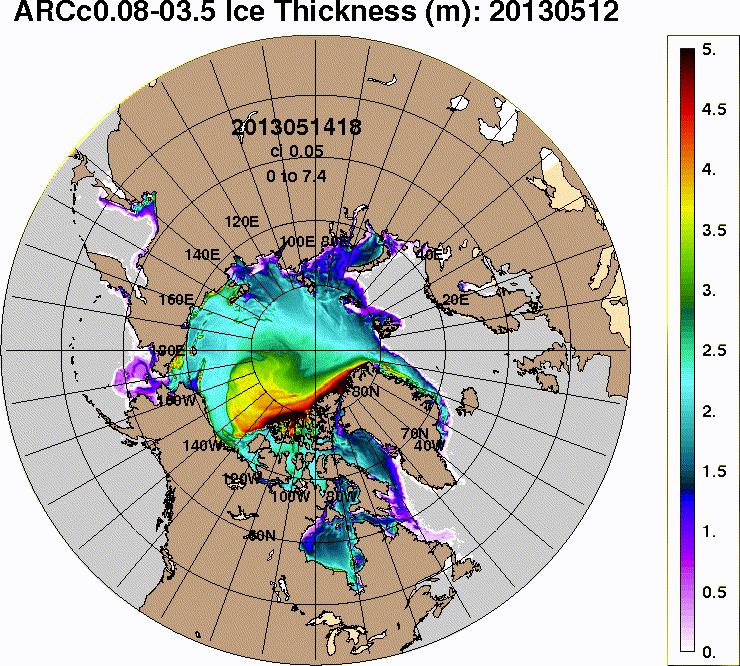Image may be NSFW.
Clik here to view.
A strong Arctic storm is endangering Russian scientists who have been studying the Arctic from a research station anchored to moving Arctic sea ice. The Arctic ocean's surface is starting to resemble a giant frozen Margarita after being stirred by a series of storms that began in mid-May. Even the thickest ice near the Canadian archipelago is cracking up under the strain. The Russian research station, on a sea ice floe near the Queen Elizabeth Islands, where some of the thickest ice in the Arctic is normally found, is being evacuated because the ice is breaking up. Now the third strong storm in the series of Arctic ocean storms is battering the station with strong winds which are stressing the block of weakened sea ice the station is resting on.
Vladmir Putin approved a 65 million Ruble emergency mission by a nuclear powered icebreaker to rescue the research team and relocate it's scientific equipment to solid ground. The ice breaker was scheduled to leave on May 31 and arrive 10 days later. The ice platform the station was anchored to had already broken into 6 pieces before the storm, prompting the evacuation. I have seen no reports yet on how the station has withstood this storm, but it is clear from the satellite imagery that the station was affected. Russian research from Arctic sea ice stations, which began in 1937, is coming to a terrifying end as the Arctic warms and the sea ice breaks up.
Update:The site continues to produce weather data which shows that the barometric pressure is still low, but winds have not been excessively strong. The site appears to be functioning normally. Presumably, everyone is fine.
Neven posted in detail about the plight of the station over a week ago before the latest storm. Note that I am less sanguine than Neven about the cracking of the ice because I think the extensive cracking will lead to faster warming and melting come July.
The crew of the nuclear icebreaker will evacuate the team of 16 polar explorers, generators, barrels of oil and lubricants, heavy machines, a balloon, an automatic upper-air sounding station, robots, a satellite receiving station, the GLONASS system to adjust orbit and refinement of the system itself, as well as devices for the carrying out the latest oceanic and geographical and seismic research.Russian scientists are holding out today in a strong Arctic storm a threatened research station on a 2.5 meter thick slab of sea ice.It was earlier reported that the Yamal icebreaker will leave Murmansk on 31 May. The journey to North Pole-40, according to preliminary information, will take 10 days.
Clik here to view.

Canada weather's satellite image shows the storm battering the Canadian Arctic archipelago on June 5, 2013
Clik here to view.

Clik here to view.
